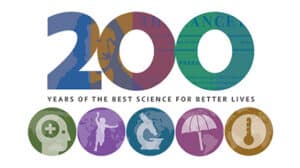India’s dependence on Chinese APIs may lead to drug price rise, shortage. Fears were fanned further after India – the biggest supplier of generic medicines – restricted the export of 26 APIs and the medicines, reports Deepika Khurana.
As the coronavirus pressures the global drug supply chain, India — the world’s biggest supplier of generic drugs has halted exports of 26 active pharmaceutical ingredients (APIs) and formulations made from them.
The restricted drugs include pain reliever Paracetamol, antibiotics Tinidazole and Erythromycin, the hormone progesterone and Vitamin B12.
“There are about 58 critical items as having been identified by the Indian government. Out of these, 26 have been shifted to restricted products for exports category,” said Sudesh Kumar, executive secretary of the Federation of Pharma Entrepreneurs, an industry body.
The committee had earlier asked India’s top research body, the Indian Council of Medical Research (ICMR), to review drugs totally dependent on China-made APIs.
The move comes as a result of the lockdown of many drug ingredient factories in China since the coronavirus outbreak began over two months ago.
The crisis highlights a growing vulnerability of Indian pharmaceutical supply chain and the pharma industry’s over-dependence on China for bulk drugs and intermediates.
Bulk drugs or active pharmaceutical ingredients (APIs) are the raw materials used for making formulations or medicines. These are used to manufacture at least 12 essential drugs that include paracetamol, ranitidine, metformin, ofloxacin, amoxicillin and ascorbic acid, etc. Intermediates, on the other hand, are chemical compounds that are used in producing APIs.
According to Dr Sakthivel Selvaraj, Director of Health Economics, Financing and Policy at the Public Health Foundation of India (PHFI) New Delhi, India imported about 63 per cent of all APIs from China. “China alone accounts for over two-thirds of API imports,” he said.
Meanwhile, recent data released by the Pharmaceutical Exports Promotion Council of India (Pharmexcil), a body under the Union Ministry of Commerce and Industry too highlights that the exports of bulk drugs and intermediates in FY19 stood at $3.9 billion, up by 10.5 per cent over the previous year.
China’s pharmaceutical industry is one of its leading industries and according to experts, it has been constantly growing in recent years.
A report released by credit rating agency Moody’s too highlights that the Chinese pharmaceutical market is among the fastest-growing markets worldwide. The favourable growth dynamics is attributed to the country’s low-cost labour, less stringent environmental regulations and the need for large factory sites.
But with China already facing coronavirus-induced supply chain woes, is it going to add to concerns of the drug shortages in India? “Absolutely, yes. In fact, there has already been some disruption of bulk drugs imports as the coronavirus outbreak forced Chinese companies to shut down their manufacturing units,” informed Siddharth Mittal, CEO & Joint Managing Director, Biocon Limited.
“The disruption has persisted for over a month now,” he added.
According to Mittal, there is no cause for panic or alarm, as of yet. “But, if the supply chain does not normalise within the next three months, and if the Chinese workforce does not return to their factories, then there will be a cause for worry though,” he pointed.
The Indian government has not just imposed restriction on drugs export, but also, they have identified various essential drugs that could run out of stock if the outbreak or lockdown continues.
The key medicines include antibiotics such as amoxicillin, moxifloxacin, doxycycline and tuberculosis (TB) drug rifampicin.
Global crisis
China, along with India, is a key link in the world’s pharmaceutical supply chain, particularly for generic drugs. But with both the countries imposing restrictions on drug exports, it has started to impact global drug supply.
Last week, the US Food and Drug Administration announced the first coronavirus-related drug shortage in the United States but declined to name the drug in question, leaving industry players debating which medicines were at risk.
“Supply chain disruption of generic formulations are common in case of industries sourcing from the affected provinces like Hunan and Jiangxi,” informed Mittal.
He further added that the pharma companies most likely to get affected by the disruption are the ones producing commonly-used antibiotics, anti-inflammatory drugs, as well as, cancer, HIV, epilepsy, and malaria drugs.
But now that China has managed to get a grip on the coronavirus crisis within its own borders, the situation seems to look better. “The production has resumed in the province of Jiangsu with workers joining back work. Infact, out of the four major pharma clusters in China, two have already resumed work,” informed Mittal.
“Resuming work does not mean resuming production,” explained Selvaraj as he highlighted that there are several factories in mainland China which have not resumed production yet.
Other factors such as transport bottlenecks and shortage of raw materials or workforce due to quarantines are further limiting the amount factories can produce and export.
Challenges and opportunities
Soon after India announced restrictions on exports of some two dozen pharmaceutical ingredients (APIs) and medicines, it took pharmaceutical industry observers by surprise.
Industry experts, however, caution that it is too early to assess how significant supply interruptions in China would affect the Indian pharma market. But, the ones at risk are either the large scale or medium scale industries.
There have been reports and indications that the scarcity of ingredients is already forcing up prices of certain drugs and raw materials. “We are already experiencing an increase in raw material pricing by 15-20% by some of the vendors,” said Mittal.
Furthermore, he reveals that because of the disruption in the supply chain, pricing of many drugs, including paracetamol and azithromycin have already gone up.
What’s causing fear among masses is the fact that pharmacy drug supply is just part of the problem as there is a lot of dependence on Chinese companies for life-saving protective equipment too.
The World Health Organization (WHO) has released a warning citing an acute scarcity of personal protective equipment (PPE) and urged global manufacturing companies to ramp up their production so as to meet the surplus requirement as the virus is rapidly spreading across the globe.
“WHO has estimated that PPE supplies must go up by 40 per cent globally as the insufficient supplies of medical masks, gloves, face shields, respirators are putting frontline healthcare professionals at risk and unprepared for attending to coronavirus patients,” said Selvaraj.
Stockpiling of drugs could be seen as an option. But, it is not a long-term solution. “It is an expensive and impractical proposition as a lot of drugs come with expiry dates. These would go waste, if unused,” said an industry source.
The road ahead
While various policies formulated by the Indian government to minimise the country’s dependence on pharmacy imports have remained only on paper, it’s time, much like generics, India becomes self-reliant in manufacturing of formulations as well.
“Setting up API units is long overdue in our country,” said Kumar.
While emphasising that the year 2015 was declared as the year for promoting API industry, he said, “Unfortunately, not much progress has been made so far.”
India’s pharma industry has not always been so dependent on Chinese imports. In fact, India was self-sufficient both in API and formulation production until the early 1990s. “We lost out to China and other countries, especially the former, chiefly owing to cost advantage on APIs,” said Selvaraj.
He further elaborated that the risk of over-dependence on China for API has affected India’s production capacity, which is causing concern to not only domestic supply but also to most export markets.“Such repeated shortages owing to one or the other reason must be seen as a wake-up call for the government,” he added.
Even though there is an opportunity, setting up manufacturing units for new products and approvals take time in India. “The cost of credit in India is very high — about 9-10 per cent. Besides, to set up a factory and to get approvals, it takes at least four to five years, which further leads to a very high capital cost,” said Mittal.
“Also, there are no commensurate export benefits as such,” he added.
So, let’s say, if companies want to change the source of their APIs from China to India, it will take them anywhere between six to nine months. The Indian government should, therefore, look at expedited reviews by temporarily relaxing some of the current requirements and providing fiscal and non-fiscal incentives in the form of tax holidays, infrastructure strengthening, improving basic necessities such as electricity, water, etc.
India has already emerged as the ‘Pharmacy to the World’ by becoming a significant supplier of safe, effective and high-quality generic formulations. India is also home to a large number of US FDA certified pharma manufacturing facilities. “Given this background and potential, said Mittal, “there should not be concerns over the volume or quality of APIs manufactured in India.”
Support journalism that matters and helps you make important decisions! Become a member now!

















